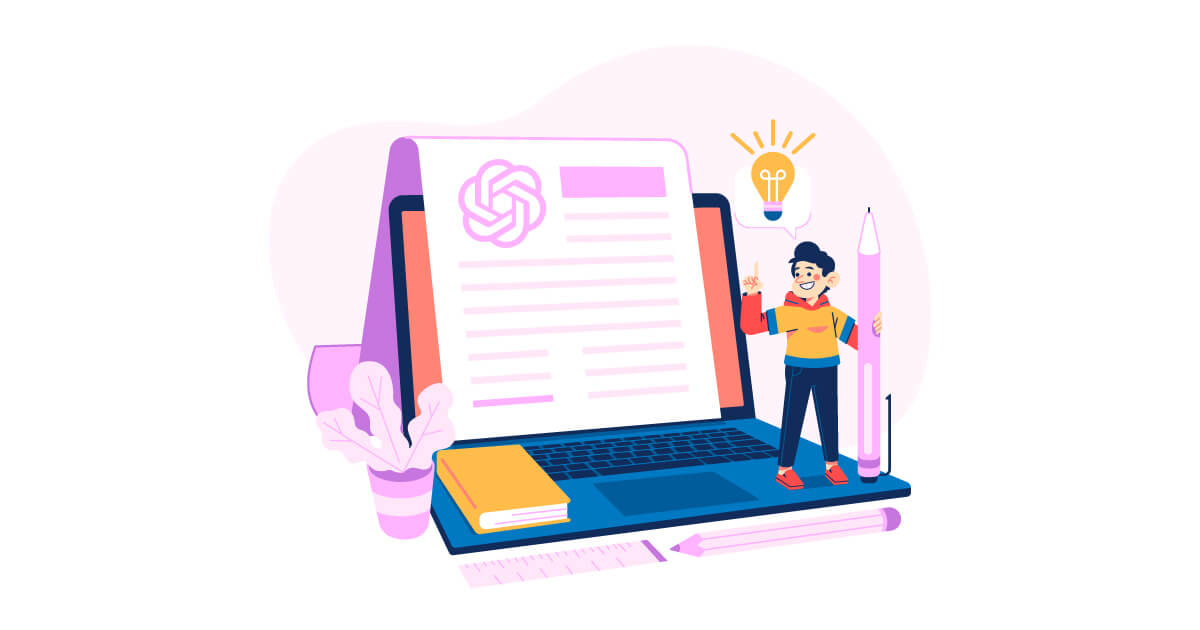
ChatGPT has undoubtedly impacted many people and businesses and has become more than just a buzzword. It has made life easier for writers, students, marketers, and entrepreneurs. However, using it correctly requires you to write prompts that can sometimes be complicated. Here are tips and tricks to help you use ChatGPT writer the right way.
Set Your Goals

Let the ChatGPT writer know what you want to achieve before starting a conversation. Set a clear idea of your goal. Do you want to get information? Are you looking to solve a problem? Maybe you want to write a novel. Whatever it is, be clear about what you want to achieve.
Begin with a Concise Context
Give the ChatGPT writer a brief introduction or the context of what you need from it. Begin your conversation with a concise explanation so the chatbot will understand you better.
Be Specific with Your Questions

Word your questions in a specific and straightforward manner. The more precise your queries are, the more accurate ChatGPT’s answer will be.
Add Follow-Up Questions
While ChatGPT is a useful and powerful tool, it has its limitations. Remember, it isn’t human and will sometimes produce unsatisfactory results. If the responses you get are not what you want or need, always ask follow-up questions. This will give the app more context and the ability to respond well.
Experiment with Different Phrasings

In case you’re still not getting the answers you’re looking for, try rephrasing your questions. Experiment with different questions and phrasings to get better results. Don’t forget to send positive feedback if you do get your desired response. This will encourage the chatbot to learn what you expect from it.
Keep It Simple
The KISS (Keep It Simple, Stupid) principle is always a good way to get ChatGPT the answers you want from it. Keep your queries and requests simple, clear, and straight to the point. Avoid using complex words and ideas that can confuse the app and generate less accurate answers.
Give Context Gradually

ChatGPT works best when you create outlines rather than generate full pieces of content. Don’t expect it to produce ready-to-publish content. Instead, feed it information in a gradual manner. This can help you get more accurate and relevant answers.
Use Relevant Keywords
ChatGPT writer understands the importance of keywords, so use them as much as you can. Doing so will help the model understand the context more and generate better responses. This is especially helpful if you’re looking to get answers on a specific topic.
Review and Edit the Responses

ChatGPT is still developing, therefore, don’t expect a perfect response from it. While it may produce excellent results in most cases, you still need to review its output for accuracy.
Think Outside the Box
ChatGPT is a versatile tool. You can use it for writing, getting information, research, and many other uses. It can also do more than write. The key is to think outside the box and find creative ways to use it. With the proper prompts or instructions, you can make it write a novel, generate business ideas, develop marketing strategies, and many others.
Common Mistakes You Need to Avoid When Writing ChatGPT Prompts

When writing prompts or instructions for the ChatGPT writer, you need to avoid the following mistakes:
Vague or unclear prompts: ChatGPT relies on the information you feed it. To get accurate results, avoid using vague words and concepts that can confuse the app.
Giving multiple prompts at one time: Always stick to one question each time. Don’t ask multiple questions per prompt to avoid the app giving you less coherent replies.
Overly complex or long questions: convoluted or lengthy prompts may result in irrelevant responses. Keep your instructions straightforward, concise, and short.
Assuming ChatGPT knows it all: ChatGPT’s knowledge is only up to September 2021. It can’t answer anything beyond that. It also doesn’t know your context, so always feed it with the right amount of information to get good results.
Using technical words or jargon: your audience or readers may know what your acronyms are, but ChatGPT does not. Avoid using overly technical or specialized words and phrases that the chatbot isn’t familiar with. Use simple and clear words and phrases to get optimum results.
Why Writing the Right Prompts Matters

AI models such as ChatGPT require the correct prompts to generate the appropriate responses. Writing suitable prompts, instructions, and questions is paramount to accurate, efficient, and relevant responses. Clear prompts also lessen the risk of misunderstandings and the need for clarification.
The right prompts also assure you that the chatbot will understand your context, save you time in repeating your questions, and prevent bias and ambiguity in its replies. Writing effective prompts is crucial to getting the most out of a powerful app.
Additional Tips and Tricks for Creating the Perfect ChatGPT Prompt

- Use references: you can feed ChatGPT with references such as an author’s writing style or the tone of voice of a favorite blogger.
- Use open-ended questions: these are questions that cannot be answered by a simple yes or no. These are a great way to encourage interaction and engagement from the chatbot. It helps keep the conversation going.
- Always give feedback: submit your feedback to let ChatGPT know where it needs improvement and when it does something right.
- Be specific with word count: tell ChatGPT the number of words you want its response to be. This way, you’ll have enough material to work with.
- Use role-playing: tell ChatGPT to play a role for more effective responses. A marketer, a graduate student, or a horror writer. This will help it write from the perspective of its role to give you more accurate responses.
Final Thoughts
Having a massive influence on the revolution of AI, ChatGPT has proven its worth in many businesses and industries. From education to customer support, it has shown its popularity and dominance, making it an indispensable tool for many.
For all your visual design requirements, there’s Penji. You don’t have to learn complicated prompts to get the designs you need. Watch our demo video here or click this link to get your first designs.
About the author

Celeste Zosimo
Celeste is a former traditional animator and now an SEO content writer specializing in graphic design and marketing topics. When she's not writing or ranking her articles, she's being bossed around by her cat and two dogs.
Table of Contents
- Set Your Goals
- Begin with a Concise Context
- Be Specific with Your Questions
- Add Follow-Up Questions
- Experiment with Different Phrasings
- Keep It Simple
- Give Context Gradually
- Use Relevant Keywords
- Review and Edit the Responses
- Think Outside the Box
- Common Mistakes You Need to Avoid When Writing ChatGPT Prompts
- Why Writing the Right Prompts Matters
- Additional Tips and Tricks for Creating the Perfect ChatGPT Prompt
- Final Thoughts













